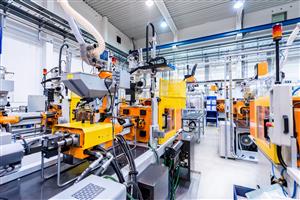
If you work in plastics production, you know that the condition and value of your equipment is vital to your company's bottom line. But how do you prepare for a plastics equipment appraisal? Is your molding or extrusion equipment selling in the market? What will the equipment appraiser need to look at during the process? Though the process can seem very complicated, knowing what to expect ahead of time makes it much easier on all involved. Here's a quick look at what happens during the process and what kind of access the machinery appraiser will need to successfully complete the inspection quickly and accurately.
What is inspected during a plastic Molding equipment appraisal
- Can the machinery appraiser easily access the machine and remove any panels to inspect the inner workings? Because the appraiser needs to see the machine and its inner workings, the entire machine be accessible. Clear away anything blocking access to the machine. If the machine is being actively used in production, you may need to schedule the appraisal during times when the production line is down.
- How does the amount of usage of the equipment compare to similar equipment used by other companies? If it's been used for fewer hours than similar machinery, it will probably be valued at a higher rate. If it has higher hours, the value will probably be lower than comparable machinery.
- Has the equipment been properly maintained and repaired as needed? Though this can sometimes be apparent by the condition of the machinery, a better bet is to provide access to any maintenance and repair logs or receipts from maintenance and repair parts, supplies and equipment.
- Is the machinery manufactured by a popular company or an unknown one? If the machinery is well known in your industry, it is probably more in demand and will have more parts readily available. This will command a stronger value than an unknown manufacturer.
- Are parts readily available to repair the machine, and are they original parts from the manufacturer or generic replacements? As with the prior question, a well-known manufacturer is more likely to still be and remain in existence with parts available from the machine. Generic parts, though they may work, may not properly interface with all the machine's functions, making it more difficult to operate.
- Has the equipment been abused or neglected? This is a very important part of the process. Abused or neglected machinery will have a lower expected lifespan and will probably have additional parts fail due to extra wear and tear from a neglected repair.
- Does it have any options or kits added that are produced by or approved by the manufacturer? These types of additions increase the value, but kits added that are not approved by the manufacturer may decrease the value if they put additional strain on the machine's systems or compromises safety.
- Can the machinery be operated so the equipment appraiser can view it in action and see what it produces? Sometimes the easiest way to discover a machine's shortcomings is to see whether it is producing quality plastic pieces and how it moves under production.
By knowing what is being inspected when you're having a plastics equipment appraisal performed at your business, you better know what documentation to have on hand and what the equipment appraiser will need to access to complete the machinery valuation.

